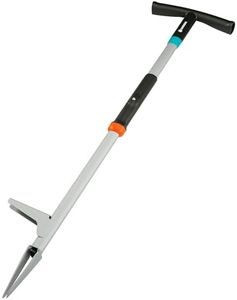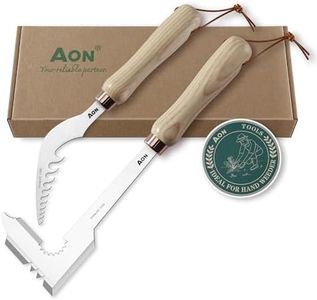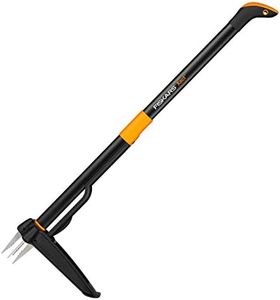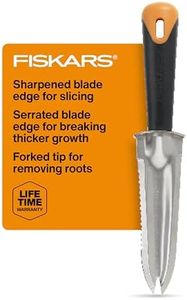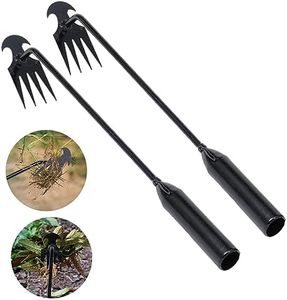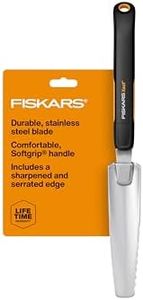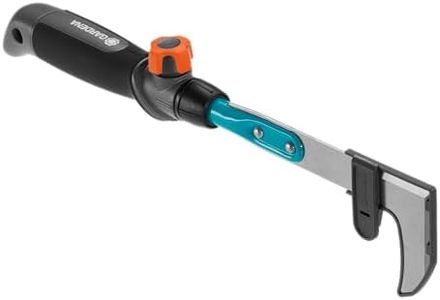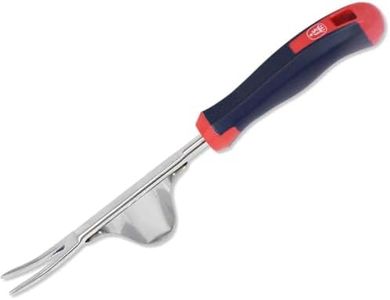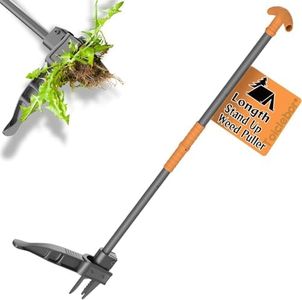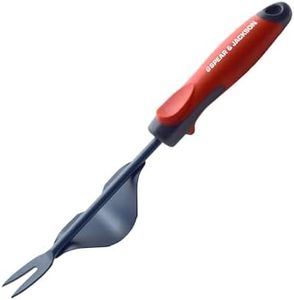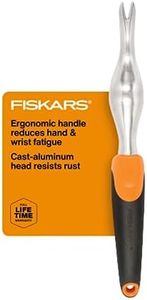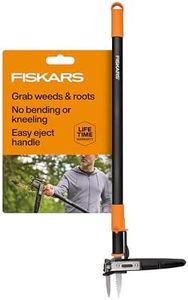We Use CookiesWe use cookies to enhance the security, performance,
functionality and for analytical and promotional activities. By continuing to browse this site you
are agreeing to our privacy policy
10 Best Weed Pulling Tools
From leading brands and best sellers available on the web.Buying Guide for the Best Weed Pulling Tools
Choosing a weed-pulling tool can make your gardening tasks much easier and more effective. The right tool helps you remove weeds by the roots, keeping your garden healthy without putting too much strain on your body. When picking a weed-pulling tool, consider where you'll use it—flower beds, vegetable gardens, lawns, or paths—as well as the types of weeds you commonly encounter. Understanding the key features of these tools will help you select one that matches your gardening style and physical needs.Handle LengthHandle length is the length of the tool from its base to where you grip it. This matters because longer handles allow you to stand while weeding, reducing the need to bend and helping prevent back pain. Shorter handles provide more control and are ideal for precise work in small areas. For larger gardens or if you have trouble bending, a long-handled tool is best. For tight spaces or container gardening, a short handle will give you the control you need.
Type of HeadThe head of the weed-pulling tool is the part that grabs, digs, or yanks the weeds. Common types include claws, forks, blades, and tongs. Claw and tong designs grip roots for pulling out entire plants, while forked or bladed heads loosen the soil to make removal easier. If you mainly deal with deep-rooted weeds, choose a head that can penetrate deeper and provide a strong grip. For surface-level or cluster weeds, a wider or flatter head works well.
MaterialMaterial refers to what the tool is made of, which affects durability and weight. Common materials include stainless steel, carbon steel, and reinforced plastics. Stainless steel resists rust and is suitable for damp soil, while carbon steel is strong but can rust if not cared for. Plastics are lightweight but may not last as long. If you want a tool to last many seasons, pick sturdy metal. If you prioritize lightness (for example, if you have limited hand strength), a reinforced plastic or lightweight metal will suit you.
ErgonomicsErgonomics means how comfortable and easy a tool is to use. A good ergonomic handle fits your grip, has a non-slip surface, and helps reduce strain on your hands and wrists. Some handles are padded or shaped to fit the curve of your hand. If you have arthritis or grip issues, look for ergonomic designs to make weeding easier and more comfortable, otherwise, a standard handle may be sufficient.
Weed Removal MechanismThis spec describes how the tool actually removes the weed—by pulling, digging, grabbing, or twisting. Some tools extract weeds by pulling them with minimal soil disturbance, while others dig underneath or twist weeds out. If you want minimal disturbance to your soil or nearby plants, choose a puller or gripper. If you need thorough root removal in tough soil, a digger or twisting tool can be more effective.
Ease of UseEase of use relates to the overall design: is the tool lightweight, simple to operate, and requires minimal force? This matters especially for those with limited hand or arm strength. Tools with assisted mechanisms or levers can reduce effort. If you want quick, hassle-free weeding, choose a model known for its simplicity and user-friendliness; if you don't mind extra effort for more precision, a classic hand tool might be fine.
